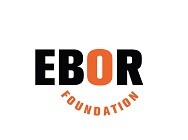EB: Epidermolysis bullosa
EB (Epidermolysis Bullosa AKA ‘blistering skin’) is a collective name for a specific number of skin disorders, resulting from a defect in the construction of proteins.
What does Epidermolysis Bullosa mean?
As explained before, EB means Blistering Skin, deriving Bullosa from the scientific word for ‘blister’ and ‘lysis’ being Latin for ‘to let go, let loose’
Four different kinds of EB
There are roughly four main categories of EB, although every patient differs in degree and symptoms:
- EB Simplex: A relatively mild and superficial from of EB which can seriously affect appearance.
- Dystrophic EB: Resulting in both a very damaged skin, as well as possible webbing (growing together) of fingers, toes and joints. Cancer is a side effect too.
- Junctional EB: Varies from milder forms to very severe, often resulting in damage tot vital organs as well, generally causing a low life expectancy.
- Kindler Syndrome: Which has varying effects like mentioned before, in different combinations.
In most varieties of EB the gene which causes the defect is known. In essence this gene results in a lack of ‘wires’ that connect the different layers of the skin.
Shortened Life Expectancy
In the more ‘friendlier’ forms EB usually results in blistering of both hands and feet. In the more severe cases, like Bor’s Dystrophic EB, there is blistering all across the body. Sometimes leaving scars, which in turn can lead to contracting fingers, toes and joints. Blistering in mouth, throat and eyes can cause severe problems like malnutrition and impaired eyesight. The chronic wounds can become infected and need constant treatment. Starting around the age of adolescence (17) cancer can become a serious issue and affects over 50% of people with EB, eventually being fatal to over 60% of those patients.
More about EB: www.debra.co.uk and www.debra.com





